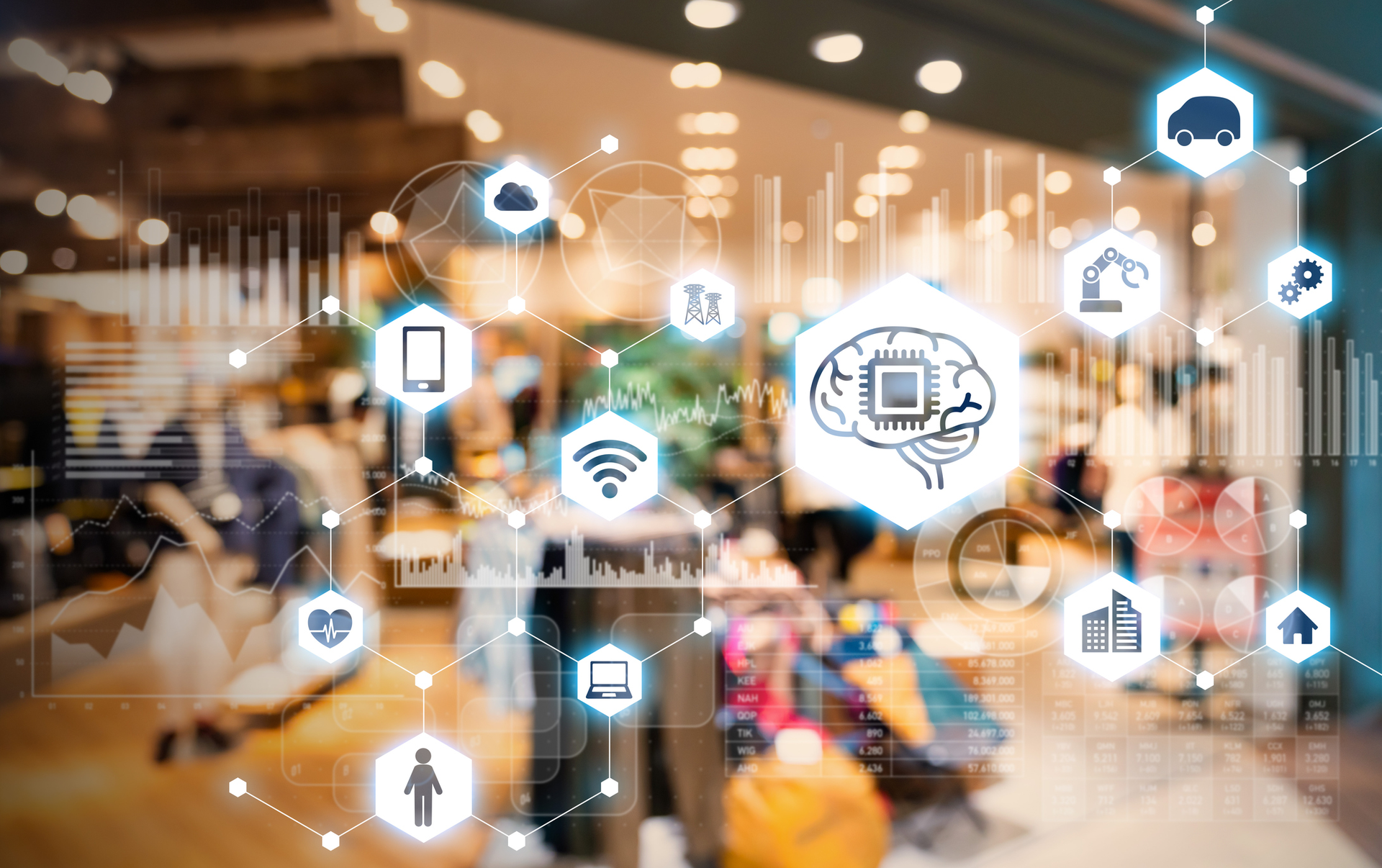Technology and creativity are coming together to transform public spaces. With something as simple as curving LED screens, an airport terminal can become the site of entrancing artwork, perhaps reducing boredom for passengers of a delayed flight. With an outdoor mesh LED display, infrastructure could take on a surreal quality. And with various forms of spatial augmented reality, retailers could draw consumers back into the doors of brick-and-mortar. Lapping ocean waves on the floor might soothe them, causing them to take their time, look at more things, and potentially increase their spend.
These particular technological ideas and displays came out of Shenzhen M-shine Electronic Technology Co., a company based in Baoan District, China. There are many vendors offering this type of transformation to retailers. They’re dealing with tech challenges such as geometric calibration, high dynamic range projection, software engineering, and the pairing of the right display technology with a given environment. The results are often dazzling. By superimposing imaginative visuals onto real-world surfaces, businesses can follow through on the trendy “surprise and delight” marketing strategy.
Technologies like this could refresh the retail experience. But could tech-infused retail centers lead to a problem with loungers? Will people flock into these stores, enjoy a digital beach day, take selfies, and then leave?
Refined lounging at bookstores
It’s worth taking a look at the book business for a precedent. There was a time when independent bookshops were more numerous, adding character to communities and satisfying bibliophiles. They were disrupted by big-box booksellers, which in turn were disrupted by Amazon.
Many consumers would go into Barnes & Noble and the like to lounge around and read books off the shelf, guilt-free, before re-shelving them and ordering the book off Amazon (either in hard copy or as an eBook) if they craved more. People used to notice this and remark that it wouldn’t be sustainable. And for many locations, it wasn’t. This year, a hedge fund acquired Barnes & Noble for $638 million. The chief executive of publisher Simon & Schuster remarked that the loss of the bookchain would have been catastrophic for the entire industry.
Postmortem documentation on a struggling or failed enterprise must account for a myriad of factors. It wouldn’t be right to reduce Barnes & Noble’s woes to the problem of loungers. But if consumers treat your expensive, leased space as a discovery tool that informs the purchases they make with a competitor, then that is generally not a good thing.
As retailers make investments in spatial augmented reality, it is perhaps worth remembering lessons from the past. The primary objective is to encourage purchases, not hangouts.
That being said, the perspectives of businesses and consumers are quickly changing. Tech has opened up new dynamics.
Retailers aren’t caught up with trying to defend their physical spaces. They’re trying to protect and grow their profits and they’re open to different ways of doing that, including buy online pickup in-store (BOPIS). They’re leaning on digital channels, location data, and automation to drive traffic and purchases both in and out of the store.
The future is in-store (some part of it)
According to The Future of Retail 2019 study from WalkerSands Communications, 1 in 4 consumers say that they feel closer to brands when they go in store. And surprisingly enough, Generation Z “digital natives” seems to appreciate the brick-and-mortar experience more so than people might expect. A recent study from Ubimo indicates that 80 percent of Gen Zs look forward to shopping in stores. Thirty-eight percent say they have difficulty finding precisely what they need online, and 35 percent say they’re not as comfortable with online shopping as preceding generations. With this being the case, it seems likely that they’ll open up their wallets, even after they take those digital beach day selfies.
And those selfies could represent earned media, particularly if the location is tagged.
“If the store becomes too popular as a result of a new technology implementation, it’s not problematic to the business, as the experience is the differentiator today ?— not the transaction,” said Mousumi Behari, Digital Strategy Practice Lead at Avionos. “Showing your customers you’re prioritizing innovation is what’s important. And creating that physical experience where they can interact with the product and brand is what ultimately drives buyer loyalty, which is essential in today’s competitive retail landscape. Additionally, creating a unique in-store experience enables more social sharing on platforms like Instagram or Snapchat which add to the brands’ social presence.”
She added, “Once they’re in the store, shoppers are more likely to make impulse purchases.”
According to the Avionos 2019 consumer expectations report, 58 percent of consumers say they’re most likely to make an unplanned buy in a physical store.
Darin Archer, Chief Strategy Officer at Elastic Path, said, “Many brands are seeing success with this retail-store-as-experience model — Bonobos being one great example. However, that kind of experience only works if your brand has created a unified view of the customer that makes transitioning from in-store to online purchasing truly seamless. If the experience is disjointed, or there’s some disconnect or friction in the buying process, that shopping experience becomes even less convenient than traditional retail. I should be able to try on what I like in-store and then have an easy way to find that exact item and purchase when I go home. Those kinds of customers have an intent so the retailer needs to make that purchasing process frictionless to capitalize on the in-store experience.”
Technology has brought both creativity and complexity to the modern retail landscape.
Ya-Bing Chu, VP of Product at Formation, explained, “Today’s world isn’t so binary — loungers versus purchasers. Loungers may, for example, become promoters; they may be influencers; they may help create viral moments; and so on.”








